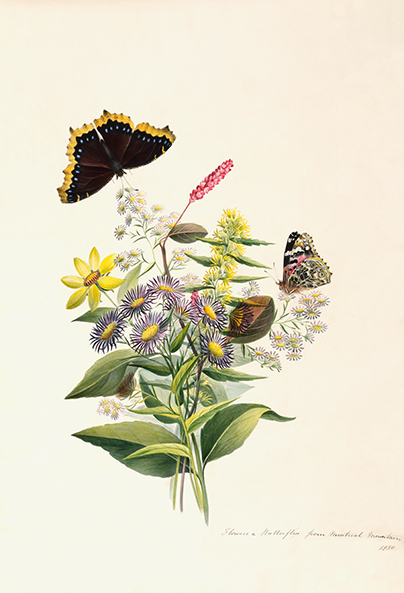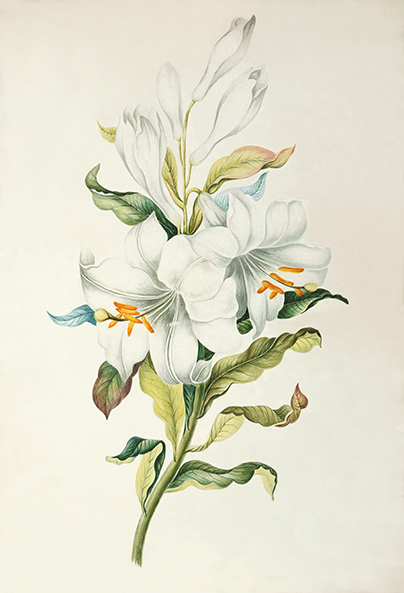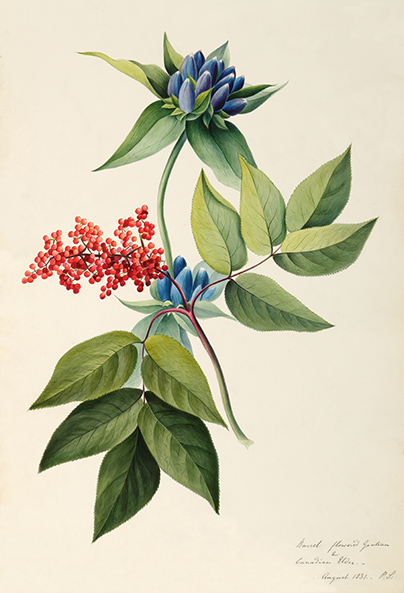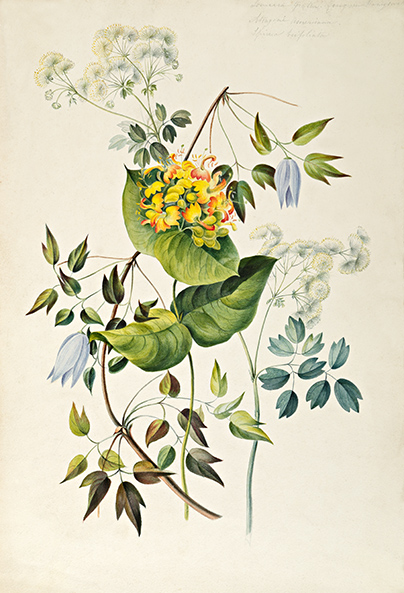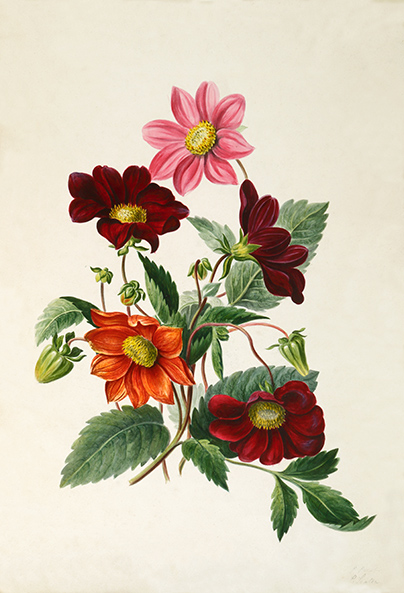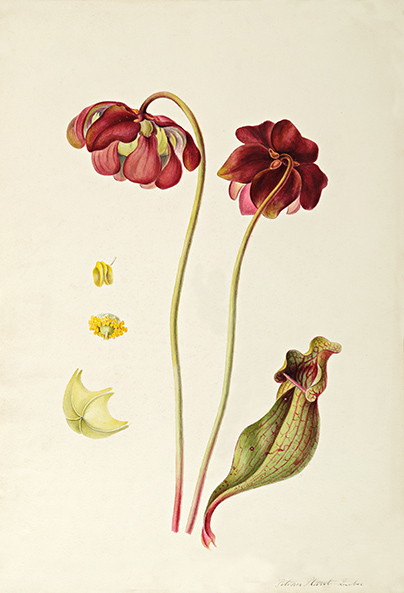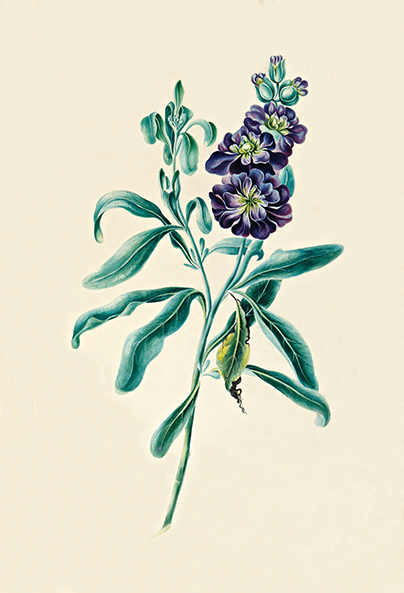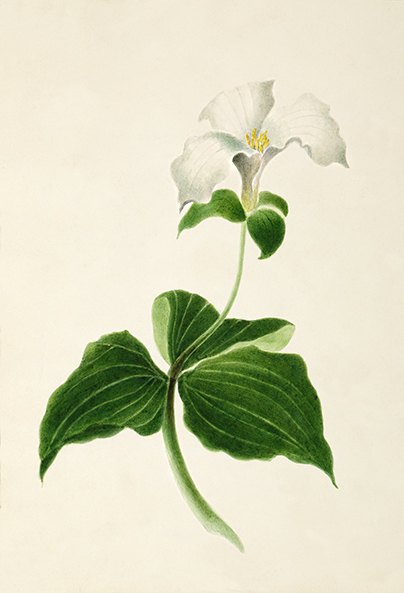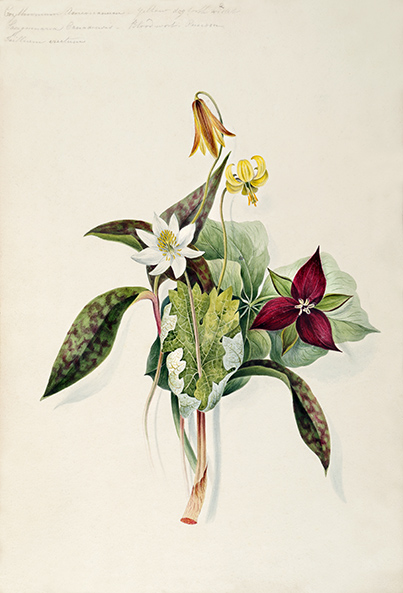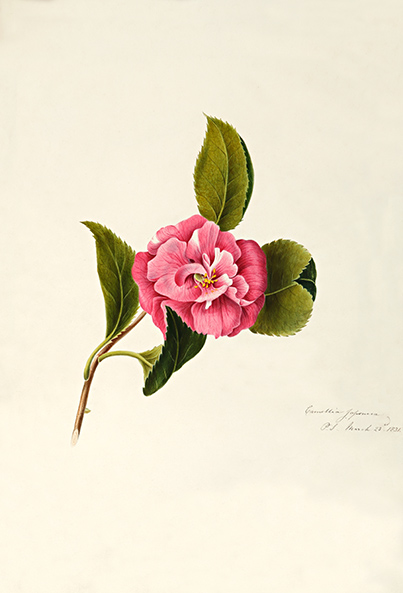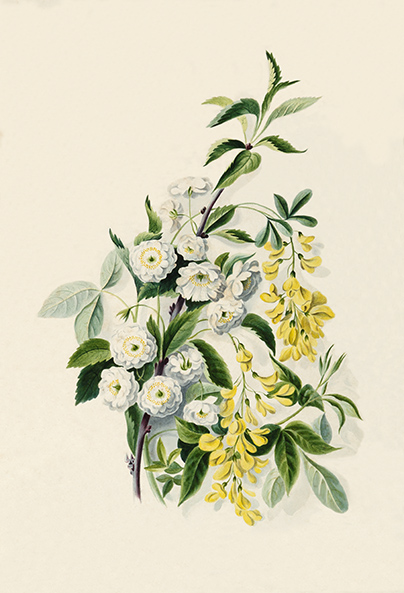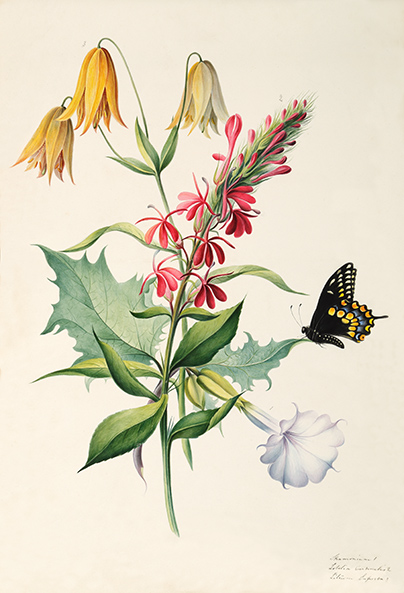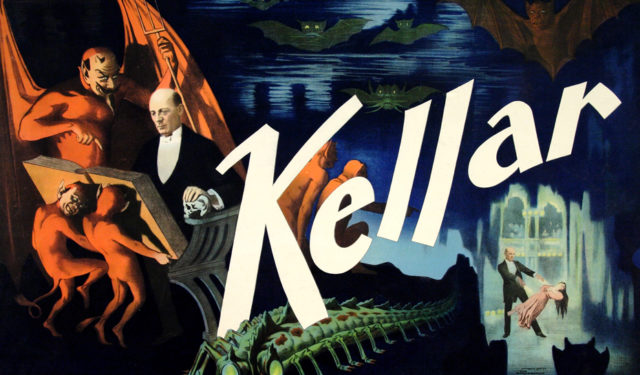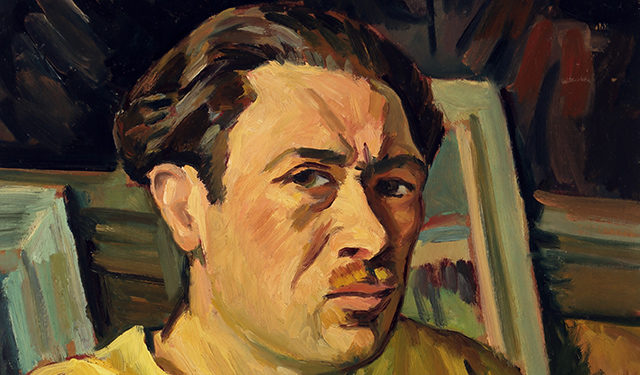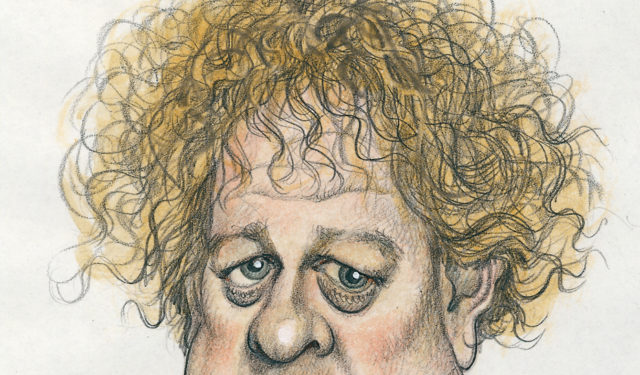The Art of Botanical Illustration
Discover the beautiful illustrations of local flora painted by Phoebe Seaton when she lived at the fort on St. Helen's Island.
December 8, 2016
Botanical illustration consists of faithfully representing plants thanks to their direct observation in nature. This pictorial form, usually produced in watercolour, has an educational, scientific purpose, but also relies on artistic criteria. It first appears in early Medieval herbariums to help with the identification of medicinal plants. By the beginning of the Victorian era, the art of botanical illustration was seen as an enjoyable activity for middle-class ladies.
Selected from the McCord Museum’s Paintings, Prints and Drawings collection, the botanical plates reproduced here are the work of Phoebe Seaton, an amateur artist who painted them when she and her husband lived at the St. Helen’s Island fort from 1830 to 1832.
Phoebe (Prentis) Seaton (1796-1863) was born and died in the county of Kent in England. She was the sister of Edward Prentis (1797-1854), a genre painter and member, then president, of the Royal Society of British Artists. To judge from the quality of the watercolours she produced during her stay in Canada, it is reasonable to assume that Phoebe benefited from solid artistic training thanks to her brother.
On May 4, 1830, Phoebe married Thomas Seaton (1791-1866), an assistant doctor with the Royal Artillery. The couple moved to Canada shortly thereafter when, on August 25, 1830, Seaton was promoted to doctor and posted to the British Army division stationed at St. Helen’s Island. During the next two years, Phoebe painted the island’s immediate surroundings as well as the areas she visited in Lower and Upper Canada. She had a particular gift for botanical illustration and produced meticulous representations of the flora of St. Helen’s Island and Montreal.
In a farewell poem dated October 4, 1832, Thomas announces their departure. Upon their return to England, the couple gave birth to their only child, Walter Lewis Seaton, born June 7, 1833. Walter would later gather his parents’ souvenirs of St. Helen’s Island and Canada to compile them in an album.
The McCord Museum acquired this album in 2015. It was graciously donated by a resident of the county of Kent, England, Phoebe Seaton’s great-great-granddaughter.


